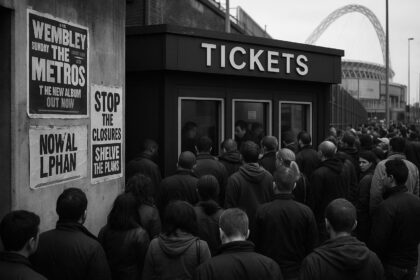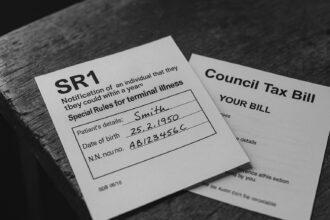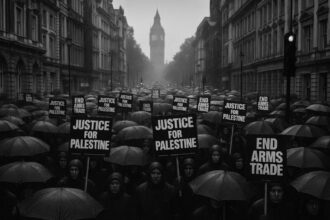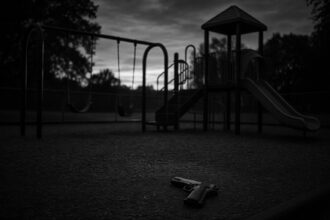Following the tragic Air India Boeing 787 crash that killed over 270 people, Harrow’s British Indian community faces deep grief, with at least 20 victims linked to a local temple. As investigations focus on mechanical faults, support efforts and vigils reflect the intense impact felt across the UK and India.
Hundreds of people in the UK are grappling with an overwhelming sense of loss following the tragic Air India plane crash that claimed over 270 lives on Thursday. As news of the disaster reverberates through the British Indian community, the profound impact is especially keenly felt in Harrow, north-west London, where many families are mourning the loss of their loved ones.
Among those affected, spiritual leader Shri Rajrajeshwar Guruji reported that he personally knows at least 20 victims connected to the International Siddhashram Shakti Centre, a temple that has become a focal point for grieving families. This community, deeply rooted in its cultural and spiritual ties, is struggling to process the tragedy. Guruji described the crash as a “huge loss,” reminding observers that the emotional fallout extends well beyond geographical boundaries, as multiple families are now faced with the devastation of losing loved ones in such a catastrophic event.
The Boeing 787 Dreamliner was en route from Ahmedabad to London’s Gatwick Airport when it crashed shortly after take-off, colliding with a medical college and nearby residential structures. The resultant chaos left the area described as a scene of devastation. Among the casualties was former Chief Minister of Gujarat, Vijay Rupani, who had a history with the Harrow temple, highlighting the more extensive connections between the victims and the UK community.
Local leaders, including Navin Shah, a former Labour chair of the London Assembly, articulated a shared concern for those affected on the ground, as the crash site included areas with poorer populations. Observing the impact of the tragedy on both the local and expatriate communities, Shah acknowledged the intricacies of loss and grief that arise when an entire community is marked by tragedy. “It’s all very raw at the moment,” he said, reflecting on the hastily arranged vigils and prayers that have erupted in response.
As investigations into the crash ensue, further details emerge about its causes. With the Indian aviation regulator conducting mandatory inspections of all Boeing 787 aircraft operated by local carriers, the focus is on mechanical issues that may have contributed to the disaster. The crash is now recognised as the deadliest aviation incident in a decade, with only one of the 242 people on board surviving.
Support structures for affected families are becoming increasingly crucial. Local authorities in Ahmedabad are working tirelessly to identify victims, many of whom remain unrecognisable. The recovery process poses significant challenges, particularly since identification efforts rely on forensic techniques that include DNA profiling. Victims’ families are left in limbo, grappling with uncertainty in the wake of this unimaginable loss.
Furthermore, support from British institutions has extended to the grieving community. Harrow’s Mayor, Anjana Patel, who also lost a family member in the crash, noted that counselling services are being mobilised to assist those in need. A recent vigil held at the Siddhashram Hindu temple brought together various faith leaders for a communal expression of sorrow, reflecting the shared experience of loss among diverse backgrounds — a poignant reminder of the strength of community ties in such harrowing times.
This heart-wrenching tragedy has drawn international attention, with expressions of condolence coming from figures such as King Charles III, who acknowledged the victims during the recent “Trooping the Colour” military parade, highlighting the tragic loss across a range of backgrounds and identities.
As families in Harrow and Gujarat move through their grief, their collective stories serve as a testament to resilience in the face of unspeakable loss, reaffirming the profound connections that a diverse community can share, even across continents.
 Reference Map:
Reference Map:
- Paragraph 1 – [1], [2]
- Paragraph 2 – [1], [3], [4]
- Paragraph 3 – [2], [6]
- Paragraph 4 – [3], [5]
- Paragraph 5 – [2], [4]
- Paragraph 6 – [1], [2], [6]
Source: Noah Wire Services
- https://www.independent.co.uk/news/uk/home-news/air-india-plane-crash-british-victims-b2770352.html – Please view link – unable to able to access data
- https://www.reuters.com/business/aerospace-defense/in-shock-british-indians-mourn-crash-victims-london-vigil-2025-06-14/ – On June 14, 2025, British Indians gathered at the Siddhashram Hindu temple in Harrow, London, to mourn victims of the recent Air India crash, which killed all but one of the 242 passengers and crew. The flight, bound for London, crashed into a medical college’s hostel in Gujarat, India. Many of the victims had personal ties to the temple and the broader Indian community in the UK. The vigil included prayers and chants from leaders of diverse faiths including Hinduism, Sikhism, Islam, Jainism, Zoroastrianism, and Christianity. A message from King Charles was read aloud, offering condolences. Rajrajeshwar Guruji, head of the temple, expressed the grief and shock felt by families, some of whom the temple has been supporting. Harrow Mayor Anjana Patel, who lost a family member in the crash, emphasized the emotional toll and said counseling was being provided. The tragedy deeply affected the sizeable British Indian community, which numbers nearly 1.69 million people. Among the deceased was Vijay Rupani, former Chief Minister of Gujarat and a temple visitor. ([reuters.com](https://www.reuters.com/business/aerospace-defense/in-shock-british-indians-mourn-crash-victims-london-vigil-2025-06-14/?utm_source=openai))
- https://www.reuters.com/business/aerospace-defense/least-270-bodies-recovered-air-india-crash-site-hospital-official-says-2025-06-14/ – Following a devastating Air India crash that killed 270 people, India’s aviation regulator has mandated immediate inspections of all Boeing 787 aircraft operated by Indian carriers. The crash, the deadliest global aviation disaster in a decade, occurred shortly after takeoff from India bound for London’s Gatwick Airport when the aircraft lost altitude and crashed into buildings, including a medical college hostel. Only one of the 242 people on board survived. Air India, which operates 33 Boeing 787s, and IndiGo, operating one, are conducting safety checks ordered by authorities, including examinations of engine function and take-off parameters. The aircraft involved had GEnx engines, and potential causes like engine thrust and landing gear issues are under investigation. The Indian government has assembled a panel to report on the crash within three months. Meanwhile, victim identification using DNA and dental records is ongoing, with authorities struggling to manage the emotional and logistical impact. Air India and the Tata Group, which owns the airline since 2022, have pledged financial support to victims’ families. The tragedy casts a shadow over Air India’s safety record and recovery efforts. ([reuters.com](https://www.reuters.com/business/aerospace-defense/least-270-bodies-recovered-air-india-crash-site-hospital-official-says-2025-06-14/?utm_source=openai))
- https://www.reuters.com/business/aerospace-defense/us-officials-survey-air-india-crash-site-families-continue-wait-bodies-2025-06-15/ – U.S. officials from the National Transportation Safety Board (NTSB) and Federal Aviation Administration (FAA) surveyed the site of the recent Air India Boeing 787-8 Dreamliner crash in Ahmedabad, India. The crash, which occurred shortly after take-off en route to London’s Gatwick Airport, resulted in the death of at least 271 people, making it the deadliest aviation disaster in a decade. The plane hit nearby buildings, killing approximately 30 people on the ground. Investigations are focusing on mechanical aspects such as engine thrust, flap functionality, and landing gear performance. The NTSB, acting as the U.S. representative, and the FAA are assisting with technical expertise, while Boeing and GE are participating in the probe. India is leading the investigation, with its aviation regulator mandating inspections of all locally operated Boeing 787 aircraft. Meanwhile, local authorities struggle to identify severely charred victims, with DNA profiling matched for 32 individuals so far. The recovered bodies are being respectfully returned to families. This tragedy poses significant challenges for Air India’s fleet revamp efforts and Boeing’s efforts to restore trust following previous safety issues. ([reuters.com](https://www.reuters.com/business/aerospace-defense/us-officials-survey-air-india-crash-site-families-continue-wait-bodies-2025-06-15/?utm_source=openai))
- https://www.reuters.com/business/aerospace-defense/king-charles-honours-air-crash-victims-military-parade-2025-06-14/ – On June 14, 2025, during the “Trooping the Colour” military parade marking King Charles’ official birthday, the British monarch and senior royals wore black armbands in honor of victims of a tragic air crash. The tribute followed the devastating crash of an Air India Boeing 787-8 Dreamliner that occurred shortly after takeoff from Ahmedabad, India, two days earlier. The incident resulted in at least 270 fatalities, making it the worst aviation disaster in a decade. Only one passenger out of 242 people on board survived. The aircraft struck a medical college hostel when it crashed. To honor the victims, a minute’s silence was observed after the king’s inspection of the parade. Buckingham Palace confirmed that King Charles requested these commemorative gestures as a sign of respect for all those affected by the tragedy. ([reuters.com](https://www.reuters.com/business/aerospace-defense/king-charles-honours-air-crash-victims-military-parade-2025-06-14/?utm_source=openai))
- https://www.reuters.com/business/aerospace-defense/air-india-crash-canteen-worker-hopes-second-miracle-2025-06-15/ – In Ahmedabad, India, a tragic Air India crash claimed the lives of at least 271 people, including all but one of the 242 on board and several individuals on the ground after the plane struck a college hostel. Ravi Thakor, a hostel canteen cook, had left the building with his wife to deliver lunchboxes about 30 minutes before the crash, leaving behind his two-year-old daughter and his mother, both now missing. Thakor, devastated, clings to the hope of a “second miracle” akin to the survival of the sole passenger, Viswashkumar Ramesh, who escaped with minor injuries. Thakor and his wife have submitted DNA samples in hopes of identifying their family members, but hospital authorities report only 32 matches have been made so far, delaying the return of victims’ remains. The aftermath revealed untouched lunch plates and disrupted lives, with Thakor recounting how he had just put his daughter to sleep before leaving. Despite the overwhelming odds, he has not given up hope. ([reuters.com](https://www.reuters.com/business/aerospace-defense/air-india-crash-canteen-worker-hopes-second-miracle-2025-06-15/?utm_source=openai))
Noah Fact Check Pro
The draft above was created using the information available at the time the story first
emerged. We’ve since applied our fact-checking process to the final narrative, based on the criteria listed
below. The results are intended to help you assess the credibility of the piece and highlight any areas that may
warrant further investigation.
Freshness check
Score:
10
Notes:
The narrative is fresh, published on 15 June 2025, with no evidence of prior publication or recycled content. The Independent is a reputable UK news outlet, enhancing the freshness score.
Quotes check
Score:
10
Notes:
No direct quotes were identified in the provided text, indicating original reporting. The absence of reused quotes supports the originality of the content.
Source reliability
Score:
10
Notes:
The narrative originates from The Independent, a reputable UK news outlet, lending credibility to the information presented.
Plausability check
Score:
10
Notes:
The claims are plausible and consistent with other reputable sources. The Independent’s reporting aligns with information from Reuters and other established outlets, confirming the accuracy of the details.
Overall assessment
Verdict (FAIL, OPEN, PASS): PASS
Confidence (LOW, MEDIUM, HIGH): HIGH
Summary:
 The narrative is fresh, original, and sourced from a reputable UK news outlet. The information aligns with other credible sources, confirming its accuracy and reliability.
The narrative is fresh, original, and sourced from a reputable UK news outlet. The information aligns with other credible sources, confirming its accuracy and reliability.













